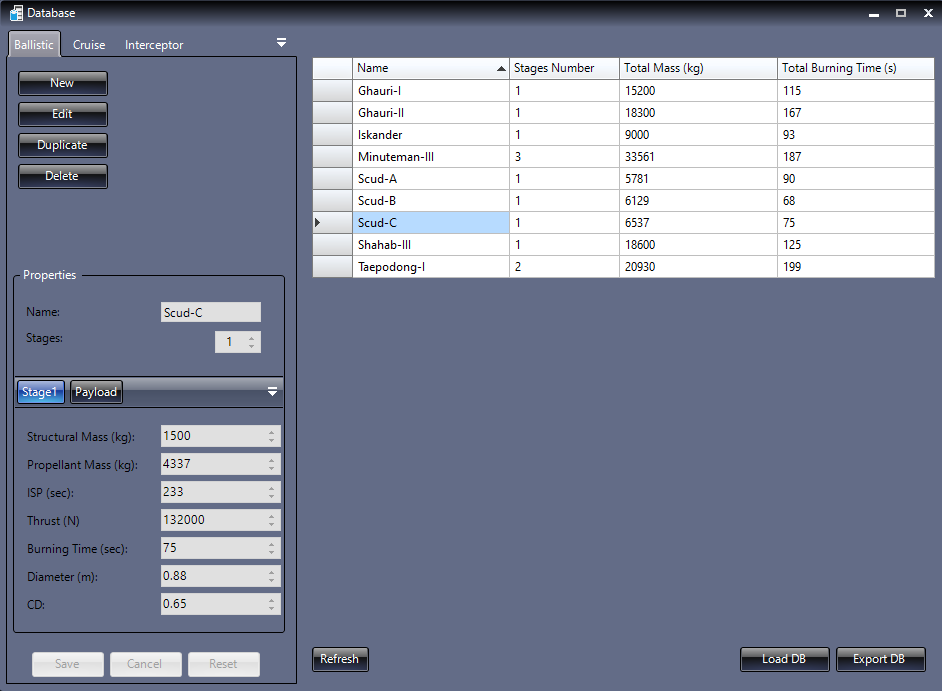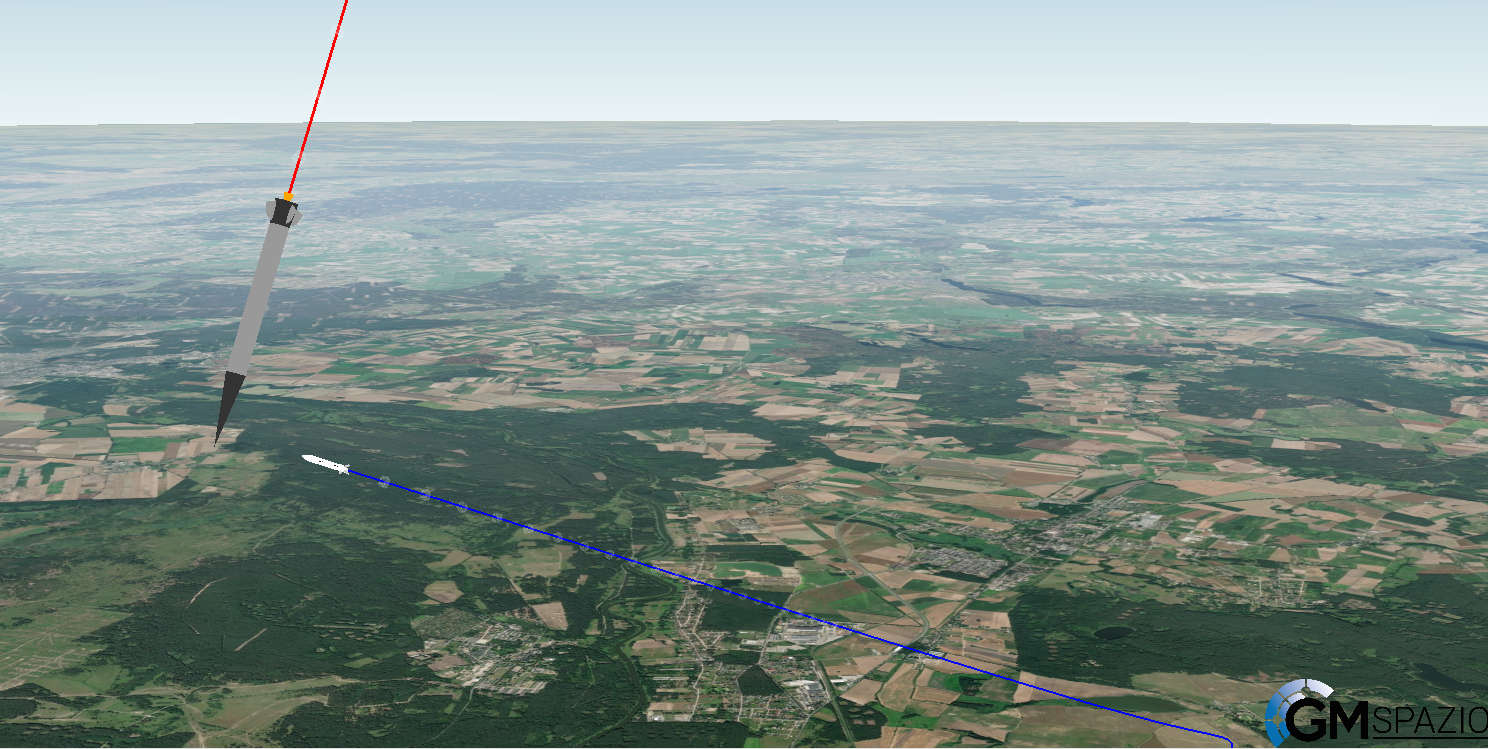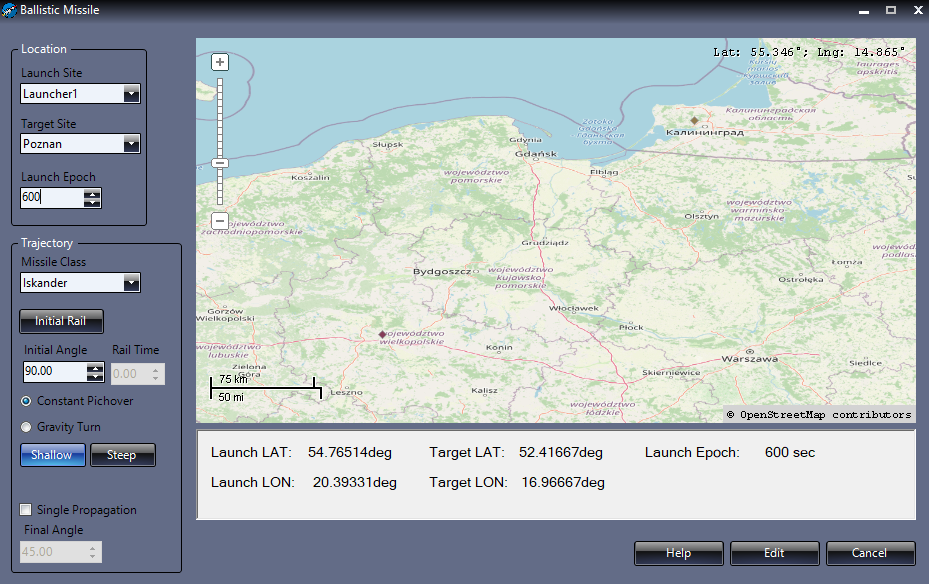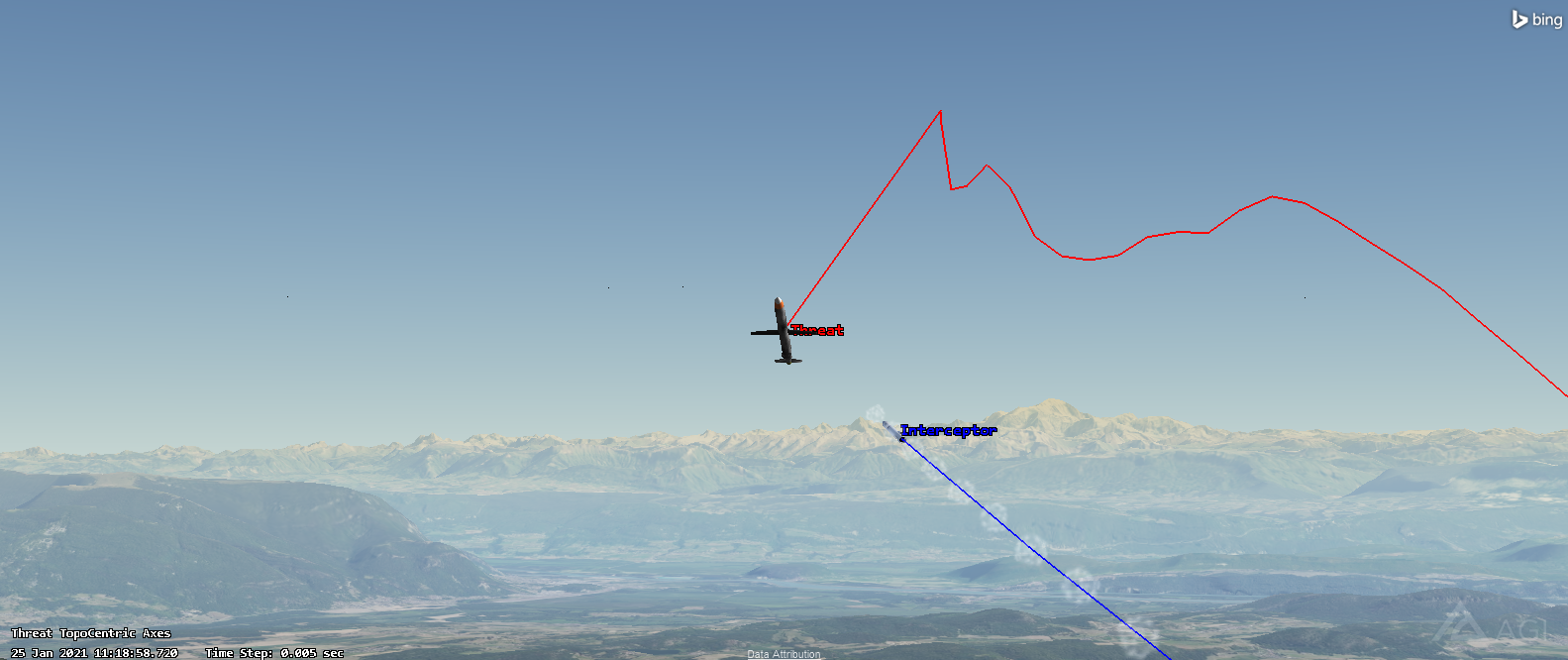SHIELD MASTER is a powerful yet straightforward software environment to evaluate the performance of the Missile Defence Systemª.
SHIELD MASTER works side by side with STK (Systems Tool-Kit) to quantify the essential metrics characterizing the performance of such kinds of systems against any type of incoming missile threat
Coping with the literature definition above, GMDT modular architecture includes:
Using Missile Designer Module (MDM), the user can define his database of missiles (both threats and interceptors) defining notional characteristics like Structural and Propellant Mass, Thrust, etc.; the second step of this phase is defining the operations’ scenario to include the physical environment in terms of launch sites, target’s location, defense sensors network (Early Warning Radars and Fire Control Radars) and interceptor launch sites.
The Missile Propagation Module (MPM) assists end-users during the simulation of the created scenario to assess several metrics like travel times, detection and reaction delays, and interceptor fire times windows.
The user will then perform end-to-end analysis over a complete set of scenarios involving short, medium, and long-range ballistic, guided missiles, and interceptors.
Last but not least, the Defence Network Module (DNM) evaluates and assesses the most critical metrics useful to evaluate MDS reaction performance to any given threat, integrating all the involved assets (threats, interceptors, and sensors network) discriminating access times across different sensors typologies to evaluate the effectiveness of defense systems.

The features available in the current version of SHIELD MASTER are listed hereafter:

Missile Designer Module
Missile Catalogue
Flight Performances Display
Threats Analysis
Missile Propagation Module


Defense Network Module
Interceptor Database
Defence Network Analysis
Modeling & Simulation Battle lab e Training
In the military field, System Modeling and Simulation techniques are assuming a fundamental role in the study of complex problems, both in the conceptual and implementation and training phases.
The needs to study the complicated problems related to the implementation and employment of a theater ballistic missile defense system find an effective and efficient means of solution in a simulation system that allows the examination of scenarios not feasible in any polygon and the reduction of testing costs.

In order to make Shield Master interoperable with the most current Defense Modeling & Simulation architectures, the software has recently been equipped with a DIS (Distribuite Interactive Simulation IEEE 1278.1 2012) Interface and in a Tactical Data Link type16 interface via JREAP/C (STANAG 5516 Ed4/6).
These communication interfaces allow the Shield Master software to be used as a generator of complex BMD scenarios in the Battle Management, Command, Control, Communications and Intelligence (BMC3I) domain and thus to interoperate with weapon systems equipped with an HWIL or SWIL (Radar, Anti-missile) interface and to display these scenarios directly on NATO command and control systems.
SHIELD MASTER is not intended to be a missile design tool; it’s instead a framework supporting the evaluation and analysis of attacking and interceptor missiles’ performance, based on the specifications stored in the databases. The accuracy of the results mainly depends on the input values, considering that several assumptions have been made to simplify the (very complex) task of integrating 6-DOF equations of motion over time.

ªMDS (Missile Defence Systems) is used in the detection, tracking, interception, and destruction of attacking missiles. Originally conceived as a defense against nuclear-armed intercontinental ballistic missiles (ICBMs), its application has broadened to include shorter-range non-nuclear tactical and theatre missiles. Since ballistic missiles have different ranges, speeds, size, and performance characteristics, the MDS are an integrated, “layered” architecture that provides multiple opportunities to destroy missiles and their warheads before they can reach their targets
© 2022 GMSpazio s.r.l. All rights reserved. Partita I.V.A.: 08473031006 | Cookie policy